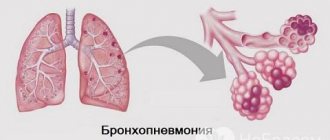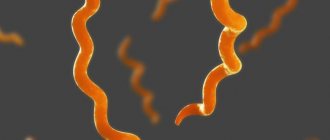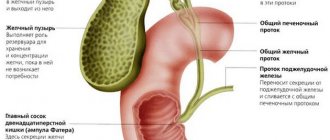Sphenoiditis [sphenoiditis; anatomical (sinus) sphenoidalis sphenoid sinus + -itis] is an infectious inflammatory disease of the sphenoid sinus and its mucous surface. It is considered one of the rarest and most dangerous inflammatory processes that occurs in the paranasal cavity. Due to the fact that the sphenoid sinuses are located at the base of the skull, their inflammation can cause serious consequences.
Sphenoiditis - what is it?
Sphenoiditis is an inflammation of the mucous membrane of the sphenoid (main) sinus of any etiology. Sphenoiditis is a type of sinusitis. Any paranasal sinus is called a sinus, and their inflammation is called sinusitis.
Inflammation of the frontal sinuses is called frontal sinusitis, of the maxillary sinuses - sinusitis, and of the ethmoidal labyrinth - ethmoiditis. All of the listed sinuses are paired, and therefore inflammation can be left-sided, right-sided or bilateral.
The sphenoid sinus can be paired if there is a septum, or unpaired. In the second case, the side of inflammation is not specified.
If all the sinuses of one half of the face are inflamed, it is said that hemisinusitis occurs; all sinuses of both halves are said to have pansinusitis. Sphenoiditis can occur with both hemisinusitis and pansinusitis.
Attention. Isolated sphenoiditis is extremely rare. As a rule, it is accompanied by inflammation of at least one more sinus.
Causes of the disease
The cause of the pathology is the inflammatory process of the membranes of the sphenoidal (sphenoid) sinus caused by infection. This may be due to the entry of bacteria or viruses from other paranasal sinuses (for example, the frontal or maxillary sinuses) and the nasopharynx. Often the spread of infection begins with the tonsils.
The main pathogens include:
- streptococci and staphylococci;
- viruses;
- fungus.
Disease of the sphenoid sinus can also occur as a complication after the flu, sore throat, or even a common runny nose in the presence of associated factors. In the absence of prerequisites, infection causes a small inflammation that disappears on its own without any unpleasant symptoms.
For the development of infection, prerequisites are necessary, against the background of which pathogens, once in the nasopharynx, will provoke the onset of inflammation. Such predisposing factors include:
- regular severe hypothermia;
- anatomical structure of the sphenoidal sinuses;
- deviated nasal septum;
- injury;
- cysts, polyps and other types of tumors located in the nasopharynx or sphenoid sinus;
- entry of a foreign body into the nasopharynx area.
Anatomical features
To understand how the disease occurs and how it manifests itself, you should know the basic anatomical features of the sphenoid sinus. It is located in the body of the sphenoid bone. This bone cannot be seen from the outside of the skull because it is not contoured in any way. The body of the sphenoid bone is located at the level of the bridge of the nose and orbits, but deep in the skull.
For reference. In adults, the sinus is often divided by a septum into right and left halves, each of which may have its own connection with the external environment. Sometimes this septum is absent and the sinus is represented by a solid cavity.
Communication with the external environment occurs through a paired opening in the anterior wall of the sinus, which opens into the upper nasal passage. Through this hole it is possible to introduce infection from the nasal cavity into the sphenoid sinus. It communicates with other sinuses through the nasal cavity, which promotes the spread of inflammation throughout the sinuses.
Like other sinuses, the sphenoid sinus is covered with epithelium containing a large number of goblet cells. These cells produce mucus, which moisturizes the sinus cavity and cleans it.
Outside, large venous collectors and branches of the oculomotor and trigeminal nerves are adjacent to the walls of the main sinus.
Surgery
For catarrhal, serous, purulent sphenoiditis, treatment is conservative, using antibiotics, insertion of catheters into the sphenoid sinus, and prolonged lavage of the inflamed sinus. Polyposis sphenoiditis is treated with surgery.
Catheterization of the sphenoid sinus
For catarrhal sphenoiditis, a catheter is inserted through the nasal passage and the outlet of the sphenoid sinus, and then a warm saline solution is injected through it. After rinsing the sinuses, the patient is asked to lie on his back and throw his head back.
Medicines in the form of solutions are administered through the catheter and the patient is asked not to change position for 20 minutes.
Surgery for sphenoiditis
A more gentle method of surgical treatment of chronic sphenoiditis is the method of endonasal opening of the wedge-shaped cavity. The operation is performed under general anesthesia or local anesthesia.
According to Gajek's method, part of the middle concha of the nose is dried out, then the cells of the ethmoid bone are opened. The cells of the ethmoid bone directly border the anterior wall of the sphenoid bone.
A break is made in the wall, the hole is widened and it is possible to visually inspect and manipulate the sphenoid sinus.
Using an endoscope equipped with a microscopic optical system, an otolaryngologist is able to monitor the entire process and visually assess the condition of the sphenoid sinus.
After accessing the sphenoid sinus, the surgeon has the opportunity to remove polyps and areas of hypertrophied mucous membrane. At the end of the operation, the sinus is washed with medications.
Causes of sphenoiditis
The cause of inflammation is the entry of an infectious agent into the cavity of the sphenoid sinus. This process
The following conditions may contribute:
- Rhinitis. Most often, inflammation of the mucous membrane of the paranasal sinuses occurs precisely because of a runny nose. In this case, the outflow of mucus from the sinus is disrupted, which now accumulates in the sinus cavity. An infectious agent enters here from the nose, which causes inflammation. The mucus becomes purulent in nature.
- Otitis. The middle ear cavity also communicates with the nasal cavity. The pathogen from the ear enters the nose, and then into the sphenoid sinus, where it causes inflammation. Moreover, the ear communicates with the pharyngeal cavity, so the microorganism can enter the sinus even from there, through the ear and nose.
- Odontogenic sinusitis. This is the cause of the most severe sphenoiditis. The causative agent of caries eats away the wall between the teeth and the maxillary sinus, and then penetrates it. Then it can destroy various bone formations and penetrate any other sinuses, corroding their walls. This disease is called "caries".
- Anatomical features. Sometimes the sphenoid sinus has a very narrow connection with the nasal cavity. The mucus cannot fully penetrate the nose, so it accumulates in the sinus cavity. Such contents are a breeding ground for microorganisms that are not removed from the sinus, but remain in it and cause inflammation of the mucous membrane. In this case, sphenoiditis can be isolated, without rhinitis, otitis or other sinusitis.
For reference. All of the above reasons lead to acute sphenoiditis. It becomes chronic if the acute form is not cured on time.
Causes
The causative agents of sphenoiditis are most often the microorganisms Streptococcus pneumonia, Hatmophilus influenza, Moraxella catharrhalis . Infection with fungi, viruses and anaerobic bacteria is also noted.
The cause of sphenoiditis is often chronic inflammation of the posterior cells of the ethmoid bone, located in close proximity to the sphenoid. Acute sphenoiditis can be a consequence of influenza-induced rhinitis or a common runny nose.
Infections of the respiratory system and allergic reactions of the body are important in the occurrence of sphenoiditis.
Sphenoiditis - symptoms
The clinical manifestations of sphenoiditis depend on how widespread the process is and what pathogen caused it. How
Typically, the patient experiences the following symptoms:
- Headache. It always occurs with sphenoiditis. It can be aching, pulling or pressing. Located behind the eyes, in the parietal and occipital regions.
- Discharge from the nose. Everything that accumulates in the main sinus will eventually end up in the nose anyway. Even if rhinitis did not exist before the inflammation in the sinus began, it will appear during the height of the disease. The nature of the discharge will depend on the type of inflammation.
- Unpleasant taste in the mouth. Exudate from the nasal cavity can not only get out, but also be swallowed inside. That is, the discharge from the sinuses flows into the nose, from there along the back wall of the pharynx, and then into the gastrointestinal tract. Some of it may irritate the taste buds of the tongue.
- Increased body temperature. With bacterial purulent inflammation, severe fever may occur. For its other types, the character is low-grade fever.
- Symptoms of intoxication. There may be a decrease in appetite, fatigue, chronic fatigue and other signs of an infectious disease.
For reference. These symptoms are characteristic of acute sphenoiditis. They will also be observed during exacerbation of a chronic condition, only the severity may be less. During the period of remission, chronic sphenoiditis either does not manifest itself at all, or headaches may be periodically observed.
Traditional methods of treating sphenoiditis
For symptoms of acute sphenoiditis, it is unacceptable to be treated with folk remedies due to the high risk of intracranial complications.
Traditional methods of treating sphenoiditis are started after consultation with the attending physician, following all the doctor’s recommendations on how and what medicinal plants to use in order to independently treat sphenoiditis.
At home, sphenoiditis is treated with nasal drops, rinsing, and turundas with ointments. All medicines are used warm.
Drops
- The juice of celandine tubers is instilled;
- drop menthol oil, camphor oil, eucalyptus oil one drop at a time.
Rinsing the nasal cavity
The nasal cavity is washed with decoctions of strawberry leaves, horsetail, wild rosemary, fireweed, and chamomile.
According to reviews on forums devoted to the treatment of sinusitis, a turpentine bath helps well with ethmoiditis and sphenoiditis. Special white turpentine is dissolved in warm water. Take a bath for 10 minutes. The water in the bath should be below the level of the heart.
After the bath, they drink hot tea and wrap themselves up warm to warm up well. The procedure can be repeated after 3 days until the symptoms of chronic sphenoiditis disappear.
Complications
Attention! Complications of sphenoiditis can occur if the disease exists for a long time and is not treated. In addition, the spread of the inflammatory process to adjacent vessels and nerves is dangerous.
The following complications can be encountered with sphenoiditis:
- Loss of smell. The main sinus lies under the olfactory tract and olfactory bulbs, therefore, due to its inflammation, a decrease in the sense of smell often occurs. In addition, nasal discharge interferes with both free breathing and the sense of smell. After illness, it may not recover.
- Decreased vision. In the area of the sphenoid sinus there is a chiasm of the optic nerves. If the inflammation spreads to this area, vision may decrease or even be completely lost.
- Double vision, squint. Occurs when the oculomotor nerves are involved in the process. In this case, accommodation and reaction to light may be impaired. Strabismus can be convergent or divergent.
- Unbearable pain in the eyes and face. When the inflammatory process spreads to the trigeminal nerve, neuritis occurs. In this case, pain will be in all places of innervation of the affected branch.
- Meningitis. It develops rarely and only if the membranes of the brain are involved in the process. More often occurs during a purulent process.
Consequences and complications of the disease
The location of the sphenoid sinus in proximity to many vital structures can lead to the development of serious complications if inflammatory processes occur in it. They can spread to the optic nerves where they cross, resulting in poor visual perception. The cranial nerves, for example, the olfactory or abducent eyeball, located in close proximity to the walls of the sphenoid sinus, are affected.
Infection may enter the cranial cavity and inflammation of the meninges, called meningitis. In some cases, it spreads to other sinuses.
If the patient is diagnosed with an acute form of sphenoiditis and a treatment regimen is prescribed. But during therapy the following is observed:
- increase in temperature indicators;
- intense headache occurred;
- nausea accompanied by vomiting;
- visual perception is impaired or the eyeball deviates to the side.
You should immediately inform your doctor about this. These symptoms may indicate the development of complications that are subject to emergency surgical intervention and sanitation of the purulent focus.
Types of sphenoiditis
This disease is classified according to several criteria. First of all, the course of the disease is determined based on the clinical picture and duration of the disease. Then the side of the lesion is determined, and then the etiological factor.
The full classification is as follows:
- Course of the disease: Acute – characterized by severe clinical symptoms, a large amount of exudate and always accompanied by intoxication; Chronic - symptoms are mild, the disease occurs in an erased form, there is less exudate, but proliferative processes are more pronounced.
- Localization of inflammation: Right-sided; Left-handed; Bilateral (in the absence of a septum in the sinus, the side is not indicated).
- Etiology of the disease (if the specific pathogen is known, it is also indicated): Bacterial; Viral; Fungal; Protozoan; Traumatic (when hit by a foreign body).
Prevention measures
Correct and timely treatment is the key to a favorable prognosis. Most patients return to normal after therapy. But the occurrence of relapses of the disease cannot be ruled out. Therefore, people who have suffered this pathology should carefully monitor their health.
It is not recommended to self-medicate flu, sinusitis and other similar infectious diseases. If a problem occurs with the respiratory system, you should seek medical help, even in the absence of other negative symptoms.
Avoid breathing polluted air. If you have an allergy, you need to identify the agent causing the allergic reaction and limit contact with this substance.
Proper hardening of the body can reduce the risk of getting a seasonal cold. Therefore, the possibility of contracting a bacterial or viral infection that can cause sphenoiditis is reduced several times.
Diagnosis of sphenoiditis
Diagnostic methods can be divided into basic and additional. The main ones include collecting complaints, anamnesis and examination. The diagnosis must be made by an otolaryngologist (ENT). He also examines the nasal cavity (rhinoscopy), examines the ears (otoscopy) and examines the back wall of the pharynx (pharyngoscopy).
For reference. With sphenoiditis, pus and inflammation may be visible in these areas.
The diagnosis can be confirmed using x-rays of the skull in two projections. In this case, a darkening (white area) will be visible in the area of the sphenoid sinus. In acute sphenoiditis, the level of fluid and air or a completely filled sinus will be clearly visible. In chronic cases, there is thickening of the walls of the sinus in the form of darkening with uneven, clear edges.
In order to identify the pathogen, a microbiological examination of the contents of the sinus is done. To do this, it is punctured, or exudate from the nose, ears or throat is examined. When bacteria are detected, their sensitivity to antibiotics is determined.
Diagnostics
Symptoms of sphenoiditis are not always strictly specific; they can mimic the picture of many other otorhinolaryngological diseases. In order to confidently establish a diagnosis of sphenoiditis, the doctor needs to conduct a series of laboratory and instrumental studies.
Laboratory research:
- Clinical blood test . Blood can reflect any pathological inflammatory process in the body. The analysis records an increased erythrocyte sedimentation rate (ESR), an increase in the level of leukocytes and lymphocytes; in chronic forms of sphenoiditis, hypochromic anemia is possible.
- General urine analysis. Urine testing is included in the clinical minimum of tests. With high inflammatory activity in the urine, proteinuria and cylindruria (excretion of microscopic protein bodies in the urine) can be detected.
Instrumental studies:
- Rhinoscopy. This research method helps to visualize the mucous membrane of the anterior, middle and posterior nasal passages. Rhinoscopic signs of acute sphenoiditis are characterized by swelling and redness of the mucous membrane and excessive accumulation of clear or yellow mucus in the area of the nasal passages. And in the chronic form of the disease, rhinoscopic signs are not so specific: only a small amount of thick secretion and pallor of the thinned mucous membrane are noted.
- Aspiration of secretions. Analysis of pathological discharge helps to identify the causative agent of the disease and prescribe etiotropic antibiotic therapy.
- X-ray of the sinuses. By conducting this research method, the diagnosis of sphenoiditis is established with the greatest accuracy. There are a number of pathognomonic radiological signs indicating inflammation of the sphenoid sinus. In addition, the doctor receives information about whether the neighboring sinuses are involved in the inflammatory process.
Sphenoiditis - treatment
Therapy can be divided into two directions: symptomatic and surgical. The first is aimed at getting rid of the manifestations of the disease, the second - at a complete cure.
Symptomatic therapy
Treatment of sphenoiditis includes taking various medications. Specific medications depend on what symptoms are bothering the patient. For headaches, analgin, aspirin, ibuprofen, and citramon are prescribed. These same drugs are used to reduce fever.
To reduce signs of rhinitis and improve the drainage of exudate from the sinus, vasoconstrictor drops are used in the nose. For otitis media, anti-inflammatory ear drops can be instilled.
For reference. However, as a rule, it is impossible to completely cure the disease with these methods.
Surgery
The goal of such therapy is to drain the sphenoid sinus and ensure the outflow of exudate. There are two ways to achieve this. The first is sanitation of the sinus through its natural opening. To do this, a catheter with a guide is inserted into the upper nasal passage and then into the main sinus. In this way, drainage can be inserted into the cavity and drainage can be ensured.
Sometimes such intervention is not enough and a more extensive operation has to be performed. Then, with the help of microsurgical instruments, additional communications are created between the nasal cavity and the sinus. Larger operations are almost never performed using this method.
For reference. If the inflammation is caused by bacterial flora, antibiotics must be used. They are taken orally or parenterally. I do not use antibiotics during surgery, and the sinus is washed with antiseptics.
Prevention
In order to prevent the development of sphenoiditis, it is necessary to deal with any infection of the ENT organs in a timely manner. Timely treatment of rhinitis, otitis and sinusitis significantly reduces the chance of inflammation of the sphenoid sinus. In addition, it is important to consult a doctor at the first signs of this disease to prevent complications.
For reference. If there are anatomical features of the sinus structure that interfere with the outflow of fluid, you should agree to surgery. Only surgical intervention will help improve the outflow and prevent the development of the disease.
Dietary rules for sphenoiditis
There is no special diet for inflammatory diseases. The main thing is to consume more vitamins and minerals. To do this, you should eat fresh vegetables and fruits. It is worth remembering that the main assistant in the fight against inflammation is vitamin C, which is found in greens. In addition, you should increase your protein intake, for example in the form of cooked meat.
Prevention and prognosis
Prevention of sphenoiditis is represented by timely correct treatment of rhinitis, sinusitis, and rinsing the nose during congestion. Vaccinations against koi and influenza help prevent the development of the disease; they increase immunity to such infections.
In addition, the following have a positive effect on the body’s condition:
- taking vitamins;
- eliminating stress.
Timely conservative therapy with broad-spectrum antibiotics helps improve the prognosis of a developing infection. The prognosis is favorable with proper timely treatment.
Disease prevention
To prevent pathology, you need to avoid crowded places so as not to become infected with acute respiratory viral infections and influenza, treat them promptly and correctly if they occur, get rid of foci of infection in the nasopharynx and oral cavity, harden yourself, get vaccinated against measles, correct the nasal septum and remove polyps and odontogenic cysts maxillary sinus.
And in conclusion, watch a video about the use of YAMIK sinus catheters, the purpose of which is the treatment and prevention of nasal diseases (runny nose, rhinitis, sinusitis, sinusitis, frontal sinusitis, ethmoiditis, sphenoiditis).
Features of the disease
The sphenoid sinuses (paranasal sinuses) are located above the nasopharyngeal space, occupying a significant part of the bone. The sizes of the sinuses may not be the same, since they are separated by a thin septum, which often divides the sinuses not symmetrically. On the anterior wall of the sphenoid sinuses there are openings that communicate with the nasopharynx. The back wall of the cavity has a very thin wall, so any poorly performed operation on the nasopharynx can cause damage. The upper wall of the sinuses is located near the nerve bundles and frontal lobes of the brain, which increases the risk of their damage due to inflammation of the sphenoid cavities.
The classification of sphenoiditis includes the following forms:
- catarrhal sphenoiditis;
- serous sphenoiditis;
- purulent sphenoiditis.
In addition, with long-term existence, the pathology can develop into polyposis and polyposis-purulent form.
Symptoms of sphenoiditis, or an inflammatory process in the mucous membrane of the sinuses described above, are often combined with the pathology of other sinuses and the ethmoidal labyrinth, but can also appear in isolation. Typically, the disease occurs only in the cold season, since its causes are due to past influenza and acute respiratory viral infections. In most cases, the pathology is diagnosed in adults, but the disease also sometimes occurs in school-age children. Improper treatment of sphenoiditis very often causes it to become chronic, while chronic sphenoiditis is much more difficult to treat.
Chronic sphenoiditis is a disease that lasts longer than 2-3 months and often recurs; it is very difficult not only to treat, but also to detect. The sphenoid sinuses are located deep at the base of the skull, therefore, when inflamed, they can involve neighboring zones in the pathological process. As a result, the clinical picture of the pathology will be unclear and blurred, that is, the signs of sphenoiditis often do not allow the specialist to immediately go in the right direction in diagnosis. However, the long course of the disease causes deep, often irreversible changes in the mucous membrane of the sinuses, which can spread to the bone and periosteum, so timely detection of pathology is very important.











